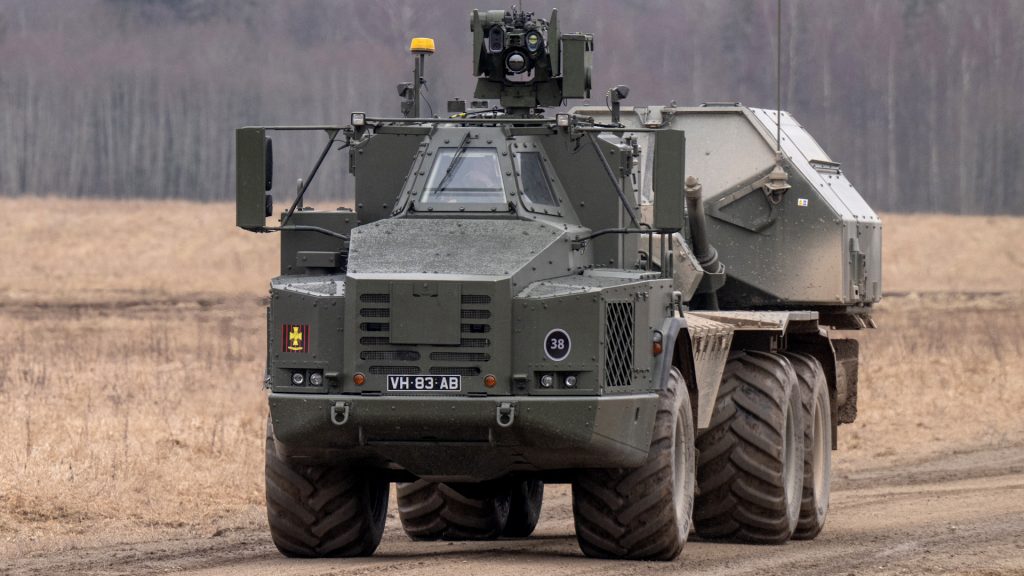Why is Sweden raising its defense spending to 3.5% of GDP?
Ella Greene March 27, 2025 0
- Sweden aims to ramp up defense spending to counter Russia’s military aggression, aiming for 3.5% of GDP by 2030.
- The country joins Eastern European nations, pushing for a higher NATO defense spending target.
- Sweden’s military expansion includes increased Ukraine aid and logistical support for NATO’s Nordic and Baltic defense plans.
Full Story
Sweden plans to increase its defense spending to 3.5% of GDP by 2030, marking its largest military buildup since the Cold War. The move would raise spending from the current level of 2.4%, reflecting concerns over Russia’s war in Ukraine and uncertainty about the future of U.S. defense commitments to Europe.
Prime Minister Ulf Kristersson announced the plan this week, calling for roughly $30 billion in new funding by 2035, most financed through borrowing.
Sweden has one of the lowest debt-to-GDP ratios in Europe, which allows it to expand spending without immediate pressure on public finances.
What is NATO’s current defense spending target, and why is it changing?
NATO currently encourages member states to spend at least 2% of their GDP on defense, but Sweden and several Eastern European nations are pushing to raise that baseline.
Kristersson said Sweden is advocating for NATO to adopt a new target between 3% and 4% and expects a formal decision at the alliance’s summit in July.
Several NATO members, including Estonia, Lithuania and Poland, aim to spend as much as 5% of GDP on defense beginning next year. These changes reflect growing concerns about Russia’s military aggression and broader regional instability.
How does this relate to pressure from the US?
Sweden’s military shift is part of a broader European response to years of pressure from President Donald Trump, who repeatedly criticized NATO countries for failing to meet their spending commitments.
During his first term, Trump warned that the U.S. might not defend allies who fall short of the agreed-upon targets and pushed members to increase their contributions to levels “much higher” than 2%.
Kristersson acknowledged that part of Sweden’s motivation is to strengthen its relationship with the U.S. He noted that the future of transatlantic defense cooperation is no longer guaranteed.
He said a stronger European pillar within NATO would make continued U.S. involvement more likely.
How has Sweden’s defense policy changed since joining NATO?
Sweden ended over 200 years of military non-alignment when it joined NATO in 2024. The move came in response to Russia’s full-scale invasion of Ukraine in 2022. The invasion dramatically shifted public and political opinion in the country.
Since then, Sweden has re-militarized key strategic areas such as the Baltic Sea island of Gotland, sent troops to Latvia and deployed Gripen fighter jets to Poland.
Officials said Sweden will also play a key logistical role in NATO’s defense plans for the Nordic and Baltic regions.
How much support has Sweden provided to Ukraine?
Since the start of the war, Sweden has committed approximately 61.9 billion Swedish crowns in military aid to Ukraine, delivering 18 aid packages that include weapons, tanks, ammunition and other support.
The Swedish government plans to increase next year’s allocation to more than 40 billion crowns, up from the 25 billion previously projected.
This increase is partly funded by shifting resources originally planned for 2026 into the 2025 budget. The government said it will revisit its Ukraine support framework for 2026 later.
What’s next for Sweden’s defense proposal?
Officials will introduce the legislation formalizing Sweden’s military expansion on April 15 and vote on it by June 20.
While Kristersson’s ruling Moderate Party leads the effort with support from the nationalist Sweden Democrats, officials said they seek broader political backing for the plan.
Kristersson said the proposed changes are part of a long-term shift in Swedish security policy driven by new geopolitical realities. He emphasized that strengthening European defense is essential, regardless of who leads the U.S. or how NATO evolves in the years ahead.
Ella Rae Greene, Editor In Chief
Ella Greene
Ella and the staff at Clear Media Project (CMP) curate these articles.
Unless otherwise noted CMP does not write these articles.
The views, thoughts, and opinions expressed in the articles published on this blog belong solely to the original authors and do not necessarily reflect the views of the blog owner. The blog owner does not claim ownership of the content shared by contributors and is not responsible for any inaccuracies, errors, or omissions.
All rights and credits goes to its rightful owners. No Copyright Infringement is intended. If you believe any content infringes on your rights, please contact us for review and potential removal.





